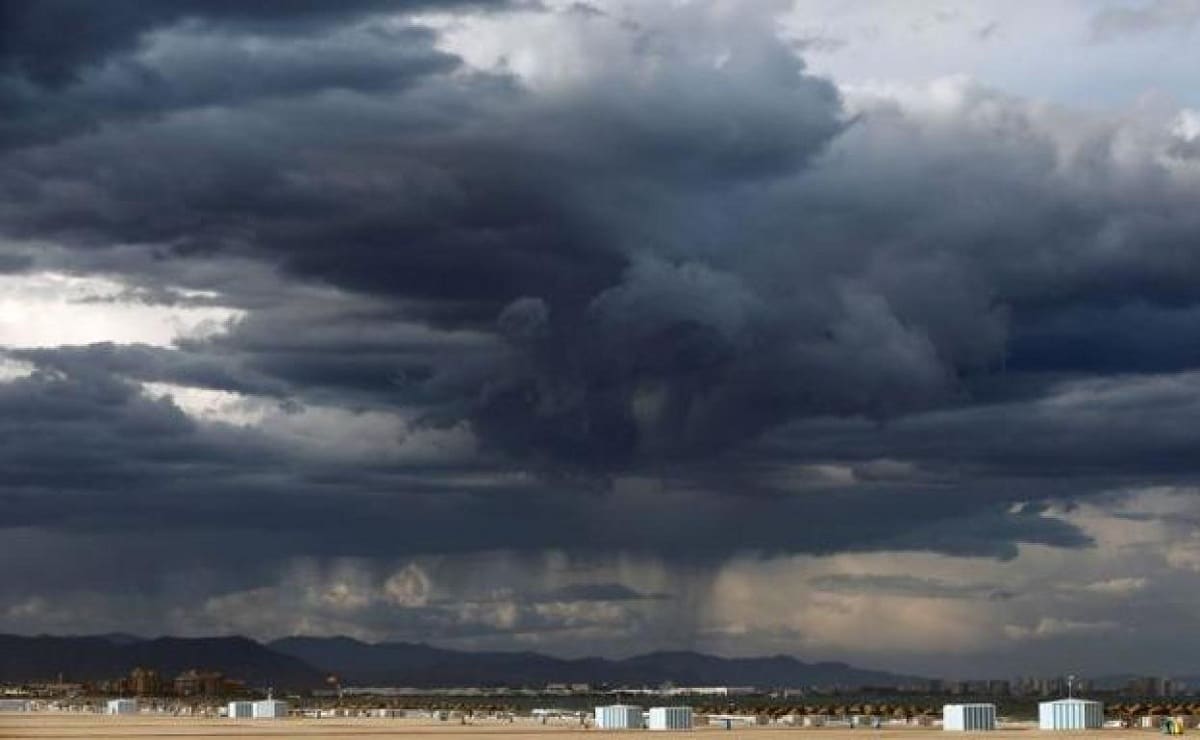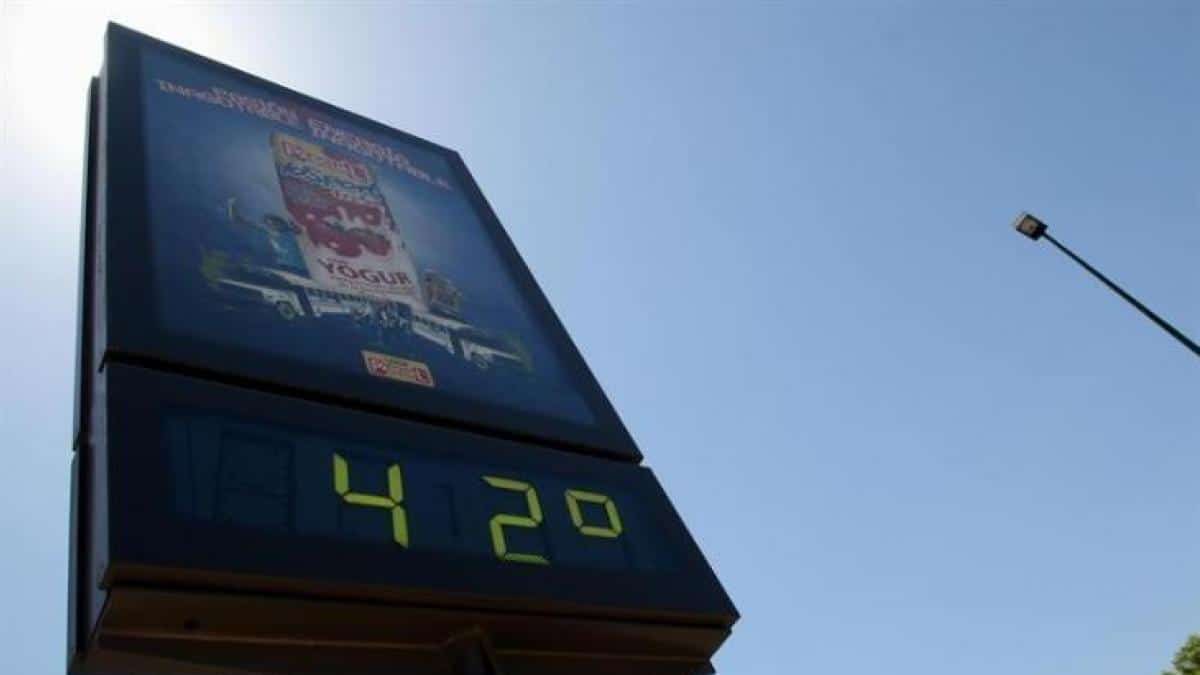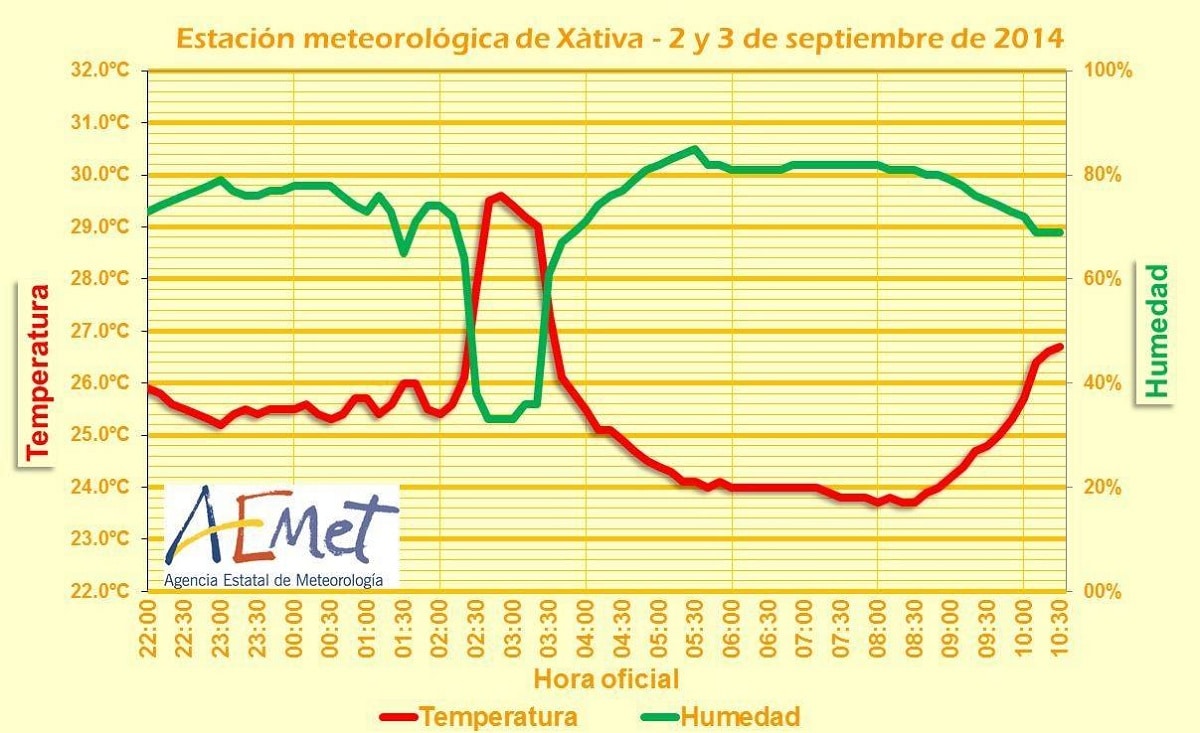
As we know, there are numerous meteorological phenomena that stand out for being strange and not happening very often. One of the rare meteorological phenomena is the warm blowouts. This phenomenon occurs when the precipitation that has fallen evaporates when crossing a layer of dry or very dry air in an environment that is relatively warm.
In this article we are going to tell you everything you need to know about hot blowouts, what are their characteristics and curiosities.
What are warm blowouts

When the precipitation will evaporate crossing a layer of dry air in a warm environment normally said precipitation is usually convective a storm. When this water falling from the sky evaporates, it causes the descending air to cool down and weigh more than the surrounding air. As the air gets colder becomes denser compared to the air that circulates around in the environment that are warmer. As a result, it defends the surface with great speed. Eventually, all the precipitation within the descending air will evaporate.
Once this has happened, the air is completely dry and there is no longer any type of evaporation that can take place at that time. Therefore, the descending air can no longer be cooled down and undergoes another process. The air continues to descend towards the surface due to the momentum it has acquired by stepping on more than the surrounding air. Dry air descends and is heated by atmospheric compression that increases as it descends.
It must be taken into account that the density of the air will begin to decrease due to the increase in temperature that is increasing. However, because the air descends it already has a great deal of momentum that carries it to the surface. With the increase in temperature and the resulting decrease in density, the speed of the descending air can gradually be reduced so that dry air will continue to descend as it gets hotter and hotter. This rise in temperatures is due to the warming of the understanding that we mentioned earlier.
How Hot Blowouts Happen

Eventually, the descending air reaches the surface and the momentum with which it moves horizontally along the surface in all directions results in generating a strong wind. This wind is normally a gust front. What's more, the inclusion of the very warm, dry mass of air from above causes the surface temperature to rise dramatically and rapidly. With this increase in temperatures the dew point on the surface decreases rapidly.
It must be taken into account that the presence of all these atmospheric conditions become the necessary ingredients so that a heat burst can be caused. However, it is very rare for all of these conditions to be met. In order to recognize hot blowouts, a temperature and humidity profile of a radiosonde is presented. This is used to see what the environment is conducive to generating the warm blowouts.
This radiosonde It is able to show the environmental characteristics and the vertical profiles of temperature and humidity that serves to observe the movement of the air. The dry layer and low quality levels and the humid and unstable layer at medium levels are the places where precipitation would develop and later warm blowouts.
These hot blowouts are often accompanied by very strong surface winds and are very difficult to predict. Although the most favorable environments are well known thanks to the soundings observed or predicted by various meteorological models.
Examples

We are going to see some examples of hot blowouts that have occurred in the world. Some examples of extreme heat gusts or blowouts reported around the world include the temperature in Antalya, Turkey, on July 10, 1977, which was 66,3 ° C; On July 6, 1949, the temperature near Lisbon, Portugal, from 37,8 ° C in two minutes rose to 70 ° C, and Apparently an incredible 86 ° C temperature was recorded in Abadan, Iran, in June 1967.
News reports said dozens of people were killed there and the asphalt streets liquefied. These reports from Portugal, Turkey and Iran are not official. There does not appear to be any information other than confirmation of the original news report itself, and studies of meteorological observations in the area at the time of the alleged incident did not show any evidence to support these extreme reports.
Kimberley from South Africa confirmed a blowout that raised the temperature from 19,5 ° C to 43 ° C in five minutes between 21: 00-21: 05 during the storm. A local meteorological observer stated that he thought the temperature had actually risen above 43 ° C, but his thermometer was not fast enough to register the highest point. At 21:45 p.m., the temperature dropped to 19,5 ° C.
Blowouts in Spain
In our country there are also some cases of hot blowouts. Normally these phenomena are associated with strong gusts of wind and a sudden increase in temperature. The water contained in this air descends and evaporates before reaching the ground. It is at this time that the descending air heats up due to the compression caused by the increasing weight of the column of air above them. As a result this sudden intense heating of the air and decrease in humidity.
Meteorology experts claim that clouds can be seen rapidly evolving vertically and denoting strong vertical updrafts. Although it looks like one, they are clouds evolving rapidly vertically so it can even look like tornadoes. Warm blowouts often occur at night or early in the morning when the temperature on the surface is lower than the layer immediately above it.
Due to their destructive effects, these hot lines can be mistaken for tornadoes since they are also associated with strong gusts of wind. However, it can be distinguished by the trail of damage it leaves behind.
I hope that with this information you can learn more about hot blowouts and their characteristics.